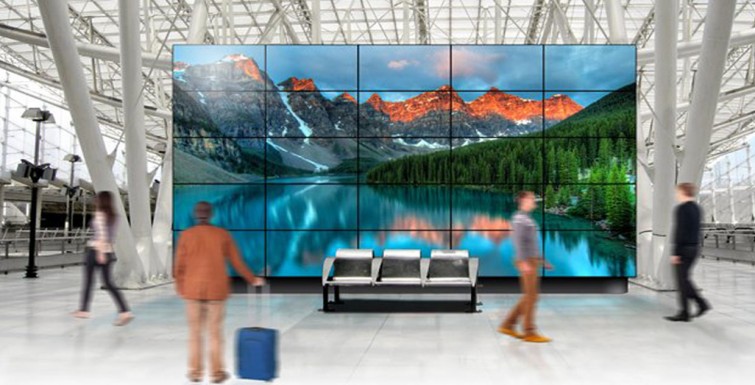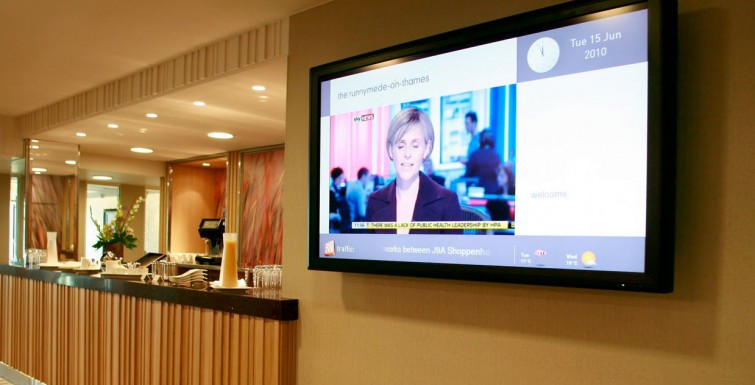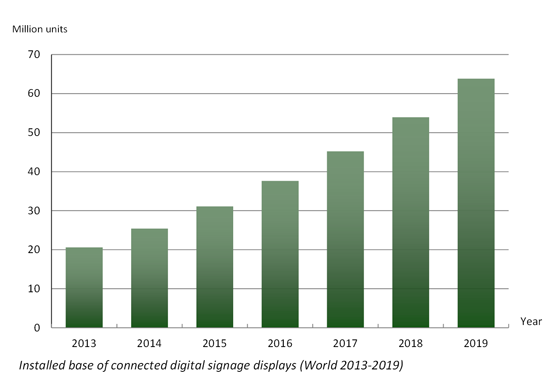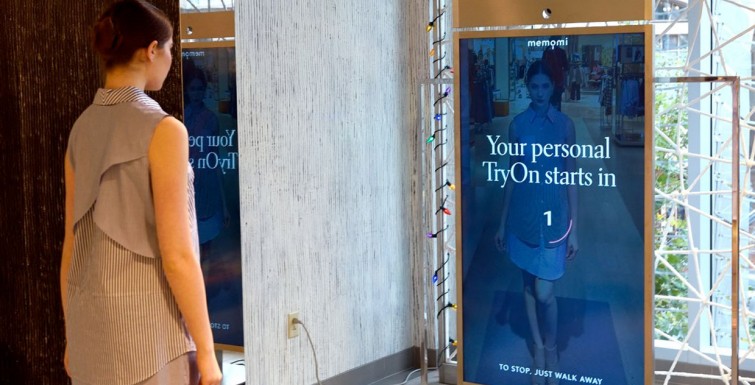Video walls are becoming increasingly visible in our world. They make big statements, capture attention and promote brands in a unique fashion. Sales and installations of video walls are experiencing record growth as customers seek a new, high-impact approach to digital signage.
This is driving companies to seek video wall solutions that are more powerful, more flexible and yet, like everyone else in the world, they don’t want to break the bank. Unfortunately, the current video wall market is hampered with costly and complicated solutions that all too often turn out to be limited in functionality. It’s time for new approaches to bring simplicity, flexibility and affordability to the video wall market.
The answer to this problem is leveraging standardized PC hardware instead of specialized AV hardware, and taking advantage of networks to simplify delivery. Deploying video walls using PC and LAN infrastructure means less specialized knowledge is required for setup, while also reducing the hardware and support staff needed to deploy large-scale video walls.
There are three different approaches to using the network to stream content to multiple displays within a video wall. The first way is to deliver the entire image to every display on the video wall and then have each display output only the appropriate cropped portion of the content. For example, with a 25-display video wall, all displays receive the entire image, but the player device located at each display crops and outputs only 1/25 of the total image. This approach works well for 1080p and lower resolution, but is not ideal for 4K and higher content because of its high-data requirements.
The second approach lets users pre-split and separately upload the cropped portions of the video. Player devices on each display talk to each other in order to maintain image synchronization. However, this method makes it time-consuming for customers to create content and upload portions to the video wall. It also eliminates many capabilities such as interactive content or real-time feeds.
The third approach to network video wall deployment involves content that is split, cropped, rotated, scaled at the server location. The server only sends the required section of the image to each display. It also uses network bandwidth much more efficiently, while also creating a high-performance and flexible video wall. This way, content is pre-split in real time and customers don’t have to waste valuable time preparing their video wall content.
More and more people are switching to network video walls, not only for cost-savings, but also for the flexibility benefits. Using the network allows for the PC or server to be placed anywhere in the building. Most other solutions require the server to be located right at the video wall, making it difficult to manage in high-traffic areas or hard-to-reach places.
Small zero-client devices can be placed at each display to connect over the network to significantly reduce downtime and allow the server to be located almost anywhere. Customers can even have displays in high-heat or greasy areas such as quick-service restaurants, without worrying about ruining the server.
Utilizing the network to power digital signage enables anyone to centralize the CPU and GPU processing. Previous approaches with network delivery required video walls to maximize the computing power at each display in order to support content and proper image synchronization. When done correctly, network-delivered video walls are more efficient and require much less hardware when computing power is centralized to one PC or server. The server connects to the client devices at each display, meaning all processing is centralized and easily supports stunning 4K content in a low-cost way.
Connecting video walls over the network provides a great range of capabilities for customers, while still remaining simple to manage and deploy. The amazing visual impact video walls have is undeniable. For those seeking simpler, more cost-effective video walls, the rise of solutions that leverage PCs and utilize the network is a very welcome improvement.
Userful Corp. is an industry provider of centralised, interactive display and virtualised desktop software designed to make it simple and affordable for organisations to implement and centrally manage interactive display infrastructure in the post-PC era.





